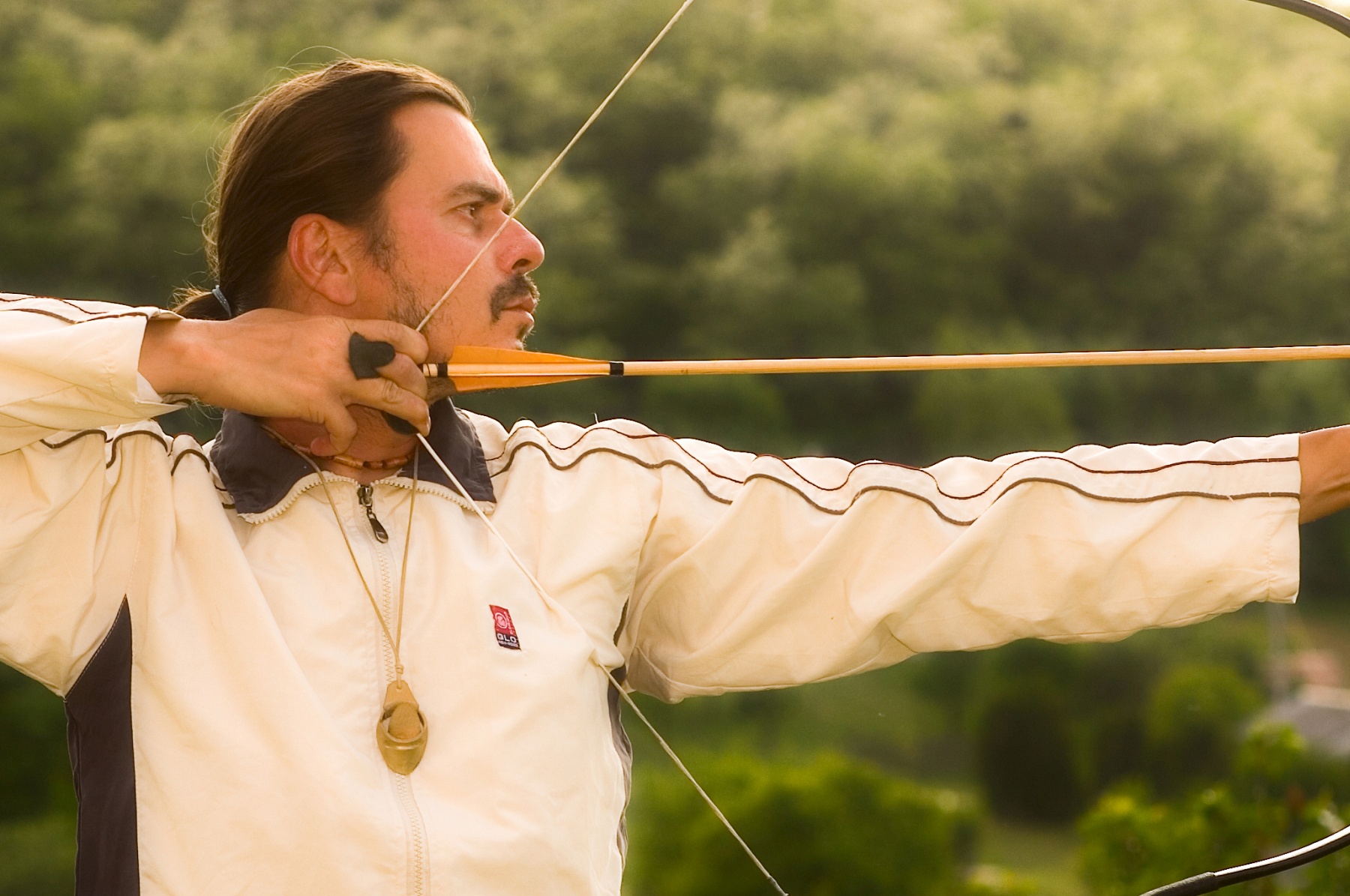THE TECHNIQUE OF ARCHERY
MANY OF US HAVE CHILDHOOD MEMORIES OF WATCHING ARCHERY ON TELEVISION OR IN MOVIES. WE MIGHT EVEN HAVE HANDLED A BOW OURSELVES WHEN WE WERE YOUNG. FROM THIS WE KNOWTHAT, FOR A RIGHT HANDED ARCHER, THE RECURVE BOW IS HELD IN THE LEFT HAND, WHILST THE RIGHT HAND PLACES (“NOCKS”) THE ARROW ONTO THE STRING, AND DRAWS IT BACK, TOGETHER WITH THE ARROW, UNDER TENSION. THIS TENSION IS FINALLY RELEASED TO ENABLE THE ARROW TO FLY THROUGH THE AIR TO ITS TARGET.
However, it’s certainly the case that fewer people – apart from professional sports archers, of course – are familiar with the various techniques for holding the bow and arrow, some of which are unobtrusive to the casual observer but highly significant in their variations and effect.

The simplest way is to hold the bow horizontally and to place the arrow on it from above with the right hand. This way it’s easier to aim as well because the arrowhead can be centred directly on the arc of the bow. When held in this way, the arrow isn’t deflected to the left or right when in flight. However, this method has certain drawbacks as well. There are limits to how far the recurve bow can be stretched due to restrictions on the reach of the arm.
Once the size of the bow was increased in order to obtain greater power, holding the bow horizontally didn’t allow the archer to fully exploit the projectile force of the bow. It was inevitable, therefore, that archers would change to holding the bow vertically, for in this position they weren’t restricted in drawing back the string. With vertical handling, one could pull the string back – if strong enough – all the way to the line of the right ear, although this made aiming a bit less accurate.
This inaccuracy, however, could be balanced out with the correct string hold. The arrowhead, placed from above onto the horizontally held bow, necessarily ended up on the left side of the arc of the bow and was resting on the left hand’s index finger once the bow was lifted into a perpendicular position. This position resulted in a slight drawing of the arrow to the left. To correct the side drift one would involuntarily aim a bit to the right, though holding the string with the right hand already pushes the bow to the right, provided that the so-called “classical string hold” is used.

Things completely changed, however, when around the 7th Century BCE, bow-using soldiers took to horseback, and the quiver moved from the back onto the waist belt. Having to reach down to the quiver, it would have been rather difficult –especially on horseback—to place the arrow above the string. It is for this reason that the majority of equestrian people place the arrow from below onto the bow whilst it is still held in a horizontal position, before turning the bow to a vertical position in order to aim the arrow. The arrowhead this way ends up on the right side of the arc of the bow, resting on the thumb of the left hand.
This action, of nocking the arrow to the right of the bow, has an effect on the string even after the moment of discharge: the string, as a counter effect, vibrates to the right so it does not strike against the forearm. Thus, when using the Mongolian string hold, also known as the thumb hold, there is no need to wear arm protectors. However the thumb is put under heavy stress by the string and so it became common to wear a sort of flat ring on the right thumb made of bone, horn, or less frequently metal, in order to protect it. Very early representations of horseback archery already reflect the shift of the string hold to the right. It can be seen in Assyrian high reliefs that the archers are shooting with the arrows on the right side of the bow; furthermore, they grip the arrow to the bow with their left thumb. Nocking the arrow to the string on the right-hand side is perceptible in early Scythian imagery as well.




